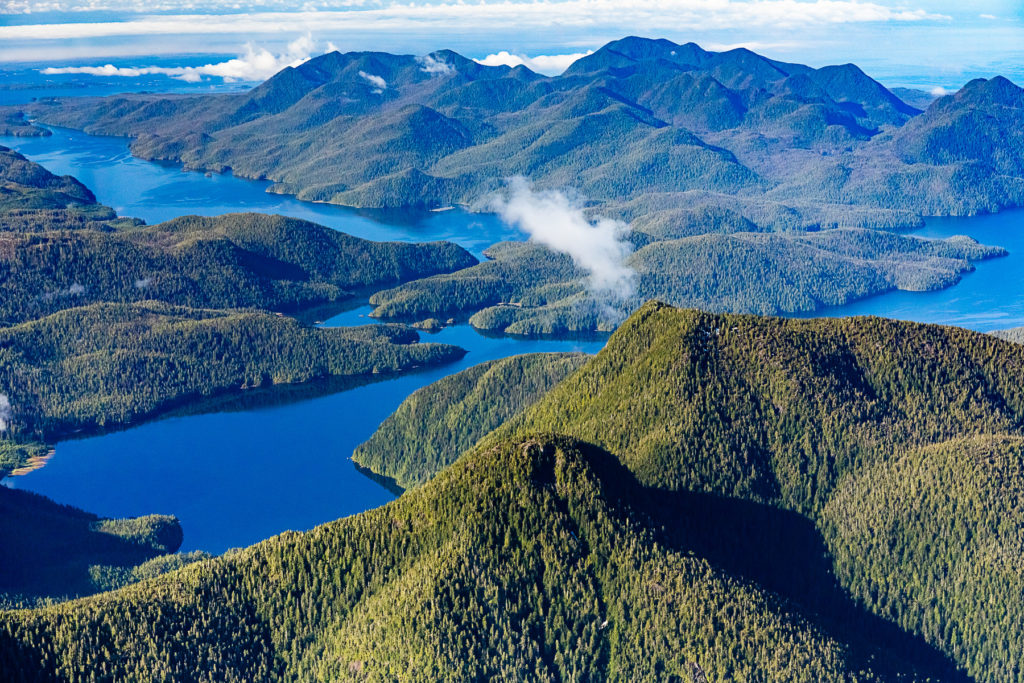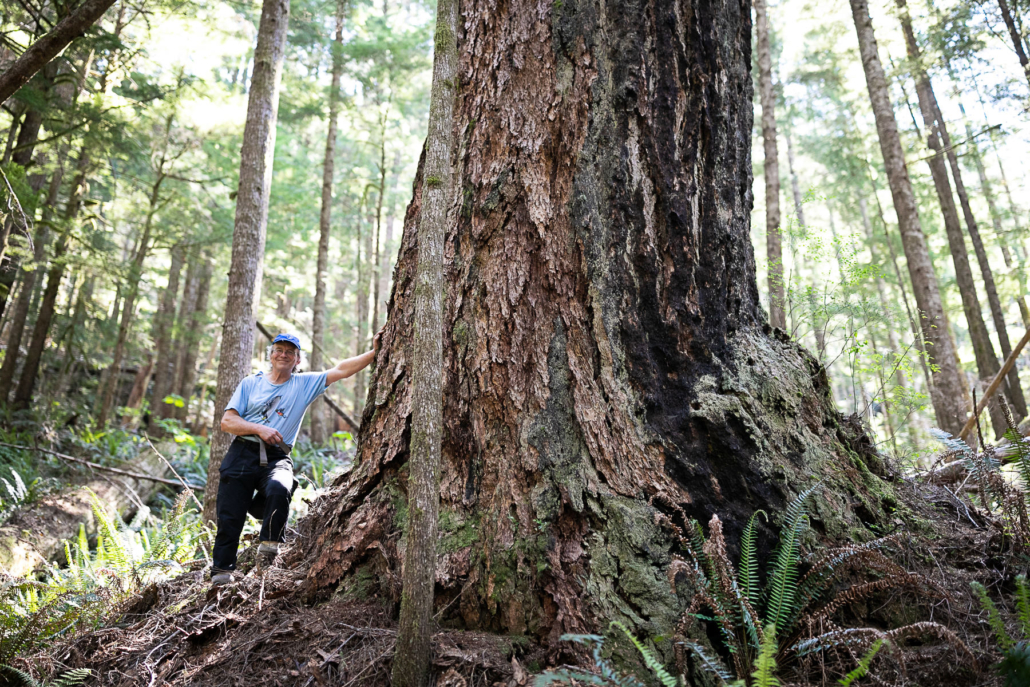 Sep 11 2020
Sep 11 2020Conservationists welcome old-growth panel report and positive first steps by BC government to address old-growth crisis
Victoria BC – The Ancient Forest Alliance (AFA) is celebrating the BC government’s announcement today that it will defer logging in nine areas, including world-famous Clayoquot Sound, and protect some of BC’s biggest trees while it works to develop a new provincial approach to old-growth management. But they say much more work urgently needs to be done to protect BC’s at-risk old-growth forests while supporting BC forestry workers and First Nations communities.
The announcement coincides with the long-awaited release of a report, entitled A New Future for Old Forests, by an independent Old Growth Strategic Review panel, comprised of professional foresters Garry Merkel and Al Gorely, which contains 14 recommendations on how BC can better manage its endangered old-growth forests based on feedback gathered from thousands of British Columbians last fall and winter.

In addition to accepting and implementing the panel’s first recommendation to increase First Nations’ involvement in old-growth management, the BC government announced it will immediately defer logging in nine areas totaling almost 353,000 ha of forest across BC – 200,000 ha of which is old-growth.
The temporary deferrals include the entire unlogged McKelvie Valley near Tahsis in Mowachaht/Muchalaht territory on Vancouver Island, the Incomappleux Valley in Ktunaxa territory in BC’s Inland Temperate Rainforest, and over 250,000 ha in Clayoquot Sound, the largest intact area of old-growth forest on Vancouver Island, located in Tla-o-qui-aht, Ahousaht, and Hesquiaht territories.
“This is a positive first step, especially for Clayoquot Sound, which is home to some of BC’s most spectacular ancient forests,” stated Ancient Forest Alliance campaigner Andrea Inness. “Now, the province needs to uphold its commitment to work with First Nations in the region to further the implementation of their visions towards securing a future for their people and the old-growth forests in their territories.”
The province also announced a Special Tree Protection Regulation would be introduced to protect 1,000 to 1,500 of BC’s exceptionally large trees with one-hectare buffer zones around them.
 Tahsis Mayor Martin Davis stands beside a giant old-growth Douglas-fir tree in the McKelvie Valley, part of a 2,231 ha temporary deferral that will prohibit logging in this area.[/caption]
Tahsis Mayor Martin Davis stands beside a giant old-growth Douglas-fir tree in the McKelvie Valley, part of a 2,231 ha temporary deferral that will prohibit logging in this area.[/caption]
“We welcome the BC government’s decision to protect more of BC’s biggest trees,” stated AFA campaigner and photographer TJ Watt. “We hope to see the Special Tree Protection Regulation expanded to capture additional trees as well as the province’s grandest groves.”
“More importantly, the BC government has signaled that it recognizes that fundamental changes are needed in the way old-growth forests are managed in BC. The panel’s report is a blueprint for a complete paradigm shift. The province now needs to commit to starting a process, based on science, to implement the Old-Growth Strategic Review panel’s recommendations over the three-year timeframe they suggest.”
“The immediate steps announced today are an encouraging start. However, they still leave out the vast majority of BC’s most endangered ecosystem types and highest productivity old-growth stands, which are of the greatest value to industry and species at risk. While the province has committed to working with First Nations leaders to identify and implement additional deferrals, they need to ensure these are located in BC’s highest risk ecosystems.”
According to a recent analysis by independent scientists, referenced in the panel’s report, only 2.7% of BC’s high productivity, big tree old-growth forests remain today and many of BC’s forest ecosystem types have very little old-growth remaining, leading to a high risk of permanent loss of biodiversity across much of BC. One of the panel’s recommendations to the province is to place logging deferrals in ecosystems and landscapes with very little old-growth forest remaining while a new strategy is implemented.
“We need to hear the BC government embrace both reports’ findings, make a strong commitment to put ecosystem health and biodiversity ahead of timber values, and set higher, science-based, legislated targets to protect old-growth forests, which the panel also recommends.”
“We also support the province’s commitment to work with First Nations leaders, governments, and organizations on old-growth management solutions – something the NDP government promised it would do in its 2017 election platform, but has only just begun,” stated Inness. “However, without funding for Indigenous-led land-use planning and sustainable economic alternatives for First Nations communities tied to old-growth protection, the main economic option being provided by the province for First Nations is old-growth logging.”
“A core part of the province’s strategy must include funding for the creation and stewardship of Indigenous Protected and Conserved Areas (IPCAs), First Nations’ sustainable economic development based on things like cultural and ecotourism, clean energy, and value-added wood manufacturing, and the purchase and protection of endangered old-growth forests on private lands.”
The BC government has stated that more work needs to be done to study the socio-economic impacts of the panel’s recommendations. To that end, the province has committed to undertaking an engagement process with conservation groups, stakeholders, labour unions, industry, and communities.
“Where there are socio-economic impacts, there needs to be economic support for First Nations, workers, and forest-dependent communities,” stated Inness. “This includes funding to support the transition to sustainable, second-growth forestry and away from logging old-growth, as recommended by the BC government’s own Select Standing Committee on Finance and Government Services in their Budget 2021 consultation report released last month. Without funding for these critical pieces, comprehensive old-growth protection cannot be achieved.”
“Today’s announcement could signal the start of a positive, new, science-based approach to old-growth management in BC. But it could just as easily signal the start of further delays and long, drawn-out consultation processes with few meaningful results. BC’s endangered ancient forests, communities, and at-risk species can’t afford to wait while the province decides which of the panel’s recommendations to implement and when. They need and expect action now.”
Facts about old-growth in BC:
- The total area of old forest in BC is ~13.2 million hectares.
- The vast majority of this forest (80%) consists of small trees.
- In contrast, only a tiny proportion of BC’s remaining old forest (3%) supports large trees: ~380,000 hectares have a site index 20 –25m, and only ~35,000 hectares of old forest have a site index greater than 25m
- These types of forests match most people’s vision of old growth. They provide unique habitats, structures, and spiritual values associated with large trees.
- Old forests on these sites have dwindled considerably due to intense harvest so that only 2.7% of this 3% is currently old.
- These ecosystems are effectively the white rhino of old growth forests. They are almost extinguished and will not recover from logging.
- Over 85% of productive forest sites have less than 30% of the amount of old expected naturally, and nearly half of these ecosystems have less than 1% of the old forest expected naturally. This current status puts biodiversity, ecological integrity and resilience at high risk today.
Source: https://veridianecological.files.wordpress.com/2020/05/bcs-old-growth-forest-report-web.pdf





